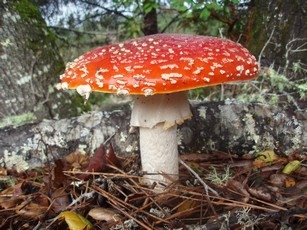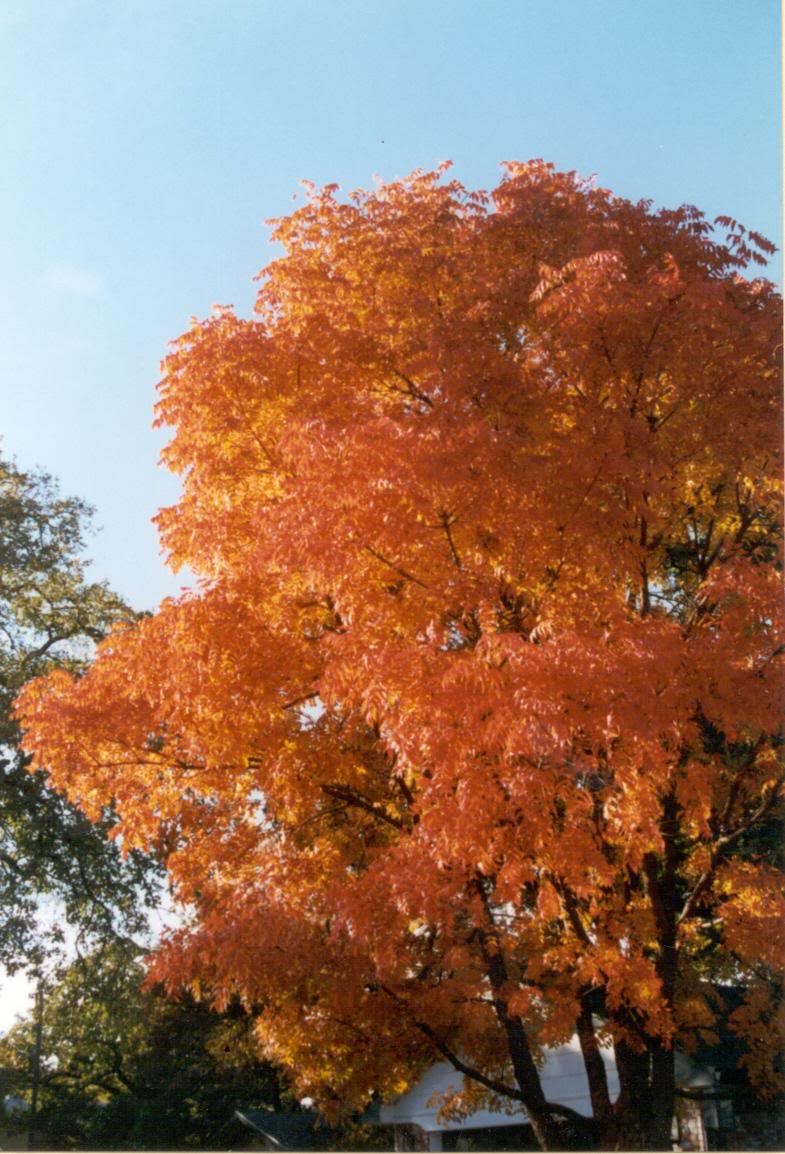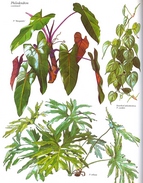Last year I was brave and published my New Year’s resolutions– at least those that pertain to the garden. It’s now the day of reckoning. Let’s see how I did and which ones I’ll keep for 2011. In the garden, as in life, simple changes can make a big difference over a long time. I’m adding a couple new ones that are important, too.
Learn something new every day. Whether it’s something new in the garden or elsewhere, keep learning. I’m starting to learn about local mushrooms. They come up in the most beautiful places. I’m looking forward to the Fungus Fair in January.
Enjoy the simple things. Laugh often. Life is not measured by the breaths we take but by the moments that take our breath away. Everyday is a gift, that’s why we call it the present.
Of the 16 gardener’s resolutions I made last year I can honestly say I achieved half of them.
I did pay more attention to the size that plants grow and believed the tag when it said "spreading habit". But I also found that pruning shears are life savers when you just have to have that new foliage plant that just came out.
I started making garden journal entries in February instead of January as I resolved. But then I tried to make up for it in March, May, June, October, November and December. I missed 5 out of 12 months. I get a "C-".
I added more pollen-producing flowering plants to attract beneficial insects which kept the good guys around longer to eat the bad bugs. And I learned what quite a few of the good guys look like. ( That counts as two resolutions )
I sat in my garden and enjoyed it, not jumping up to rearrange containers. (This one was easy)
I applied to get my little garden certified as a wildlife habitat with the National Wildlife Federation by making sure I provided food sources, water, cover, places to raise young and used sustainable gardening techniques.
I fertilized my perennials a couple of times this year with organic compost and fertilizer instead of just once and boy were they happy. The trees and larger shrubs really only need a light dose once a year so I was good there.
I wore sunscreen everyday. (My doctor wants a hat, too. Maybe this year I’ll wear one.)
The other half of last year’s resolutions are being recycled as they’re still good ones:
I will not buy a new flower, shrub or tree until I have a plan for it in the garden.
I will sharpen and clean my garden tools so they look spiffy and work better.
I will start a worm bin with my kitchen scraps and a compost pile for leaves and plant debris. (I have so many raccoons it’s like a party out there at night but I’m going to come up with a critter-proof solution.)
I will weed regularly- not waiting until they’re so tall they swallow up my gardening tools when I lay them down.
I will accept a few holes in my plants but tour the garden regularly to identify if a problem is getting out of control and I need to break out an organic pesticide.
I will prune my maples, transplant my overgrown containers and divide my perennials when I’m supposed to.
I will plant more things to eat. Edibles anywhere in the garden feed the body and the soul. (This summer was so cold I didn’t have much luck in my partial shade.)
I will stop rationalizing my plant habit is better than gambling, clothes shopping or smoking.
I will do better to practice what I preach in this column.
Happy New Year in 2011 from The Mountain Gardener


.jpg) lants such as aster, campanula, calla lily, daisies, daylily, rudbeckia (black-eyed Susan) and yarrow were smaller than normal this year or your plants are just too big and crowded, it’s time to divide them. Dig out each clump so the rootball come up intact. This will take a little muscle but think of all those calories you’re burning in the process.. Gently shake off or wash off excess soil and divide with a sharp knife, pruning shears or a shovel I like to use an old serrated bread knife for this. Each division should have leaves and plenty of roots Replant each immediately. You’ll increase the number of your plants and save a lot of money, too.
lants such as aster, campanula, calla lily, daisies, daylily, rudbeckia (black-eyed Susan) and yarrow were smaller than normal this year or your plants are just too big and crowded, it’s time to divide them. Dig out each clump so the rootball come up intact. This will take a little muscle but think of all those calories you’re burning in the process.. Gently shake off or wash off excess soil and divide with a sharp knife, pruning shears or a shovel I like to use an old serrated bread knife for this. Each division should have leaves and plenty of roots Replant each immediately. You’ll increase the number of your plants and save a lot of money, too. ooler temperatures of autumn cause trees to switch into energy-storage mode, at which point their leaves stop producing chlorophyll. For the few weeks before the leave fall to the ground, they are colored only by their natural pigments. It’s these colors – red and purple anthocyanins, yellow and orange carotenoids – that make fall foliage so glorious. Some years the show is more dramatic than others. The best conditions for intense leaf color to develop are dry sunny days followed by cool ( but not freezing ) nights.
ooler temperatures of autumn cause trees to switch into energy-storage mode, at which point their leaves stop producing chlorophyll. For the few weeks before the leave fall to the ground, they are colored only by their natural pigments. It’s these colors – red and purple anthocyanins, yellow and orange carotenoids – that make fall foliage so glorious. Some years the show is more dramatic than others. The best conditions for intense leaf color to develop are dry sunny days followed by cool ( but not freezing ) nights.  . It’s confusing in Sunset Western Gardening Guide as our area has many microclimates and their map is not detailed enough to reflect this. They even show Felton as being on a ridge top instead of on the valley floor. Here are some tips to help you determine in what zone you garden.
. It’s confusing in Sunset Western Gardening Guide as our area has many microclimates and their map is not detailed enough to reflect this. They even show Felton as being on a ridge top instead of on the valley floor. Here are some tips to help you determine in what zone you garden.
 of flowers if you’re lucky. Mexican bush sage are still blooming as are lion’s tail, maybe a few cosmos, Japanese anemones and asters. Ornamental oregano holds up well , too, especially the variety Santa Cruz. Foliage can be a key player and might be found from smoke bush, ornamental grass, purple hopseed, crape myrtle, Chinese pistache, oaks, maples and liquidambar. Dogwood leaves would be beautiful as would ornamental pear. Berry accents are a staple for a fall bouquet and you might have nandina, cotoneaster, hawthorn, dogwood or crabapple in your garden. Go out and fill a brown shopping bag with whatever strikes your fancy to create a beautiful fall bouquet to give or dress up your own table or entry. Your arrangement should last about 4-7 days in a moderately cool room.
of flowers if you’re lucky. Mexican bush sage are still blooming as are lion’s tail, maybe a few cosmos, Japanese anemones and asters. Ornamental oregano holds up well , too, especially the variety Santa Cruz. Foliage can be a key player and might be found from smoke bush, ornamental grass, purple hopseed, crape myrtle, Chinese pistache, oaks, maples and liquidambar. Dogwood leaves would be beautiful as would ornamental pear. Berry accents are a staple for a fall bouquet and you might have nandina, cotoneaster, hawthorn, dogwood or crabapple in your garden. Go out and fill a brown shopping bag with whatever strikes your fancy to create a beautiful fall bouquet to give or dress up your own table or entry. Your arrangement should last about 4-7 days in a moderately cool room.